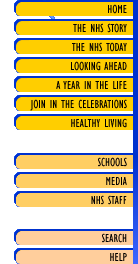 
 |
|
  |
 |

 Argentina Argentina
 India India
 Kenya Kenya
 United Kingdom United Kingdom
 United States of America United States of America
 Japan Japan
|
| |

1990 data. Information is reproduced from the Guide to Health Services of the World, published by the International Hospital Federation, ISBN 0 900590 26 2. Price £16.00.
| Birth Rate (per 1000 Population) | | 16.7 |
| Life Expectancy at Birth (Years) | 72.0 (Male)
78.8 (Female) |
| Death Rate (per 1000 population) | 9.2 (Male)
8.4 (Female) |
| Infant Mortality (per 1000 live births) | | 9.8 |
| Health Expenditures |
Total expenditure on health services in national currency - 666,200 m
Amount spent per capita in national currency - 2,566
|
| Sources of Health Expenditure |
Governments (all levels) - 42%
Private Medical Insurance - 33%
Personal (out-of-pocket payments) - 20%
|
| Description of Health Service |
Structure and Organisation
The healthcare system is administered within the private and the voluntary sectors on a decentralised basis, with supporting public/private financing that includes national, state and regional components. The responsibility for delivery of health services resides primarily within the private and voluntary sectors, with federal healthcare institutions having responsibility for certain sections of the population such as veterans and the military. Various Federal and State regulations govern aspects of healthcare delivery.
Financing
Public budgets accounted for 42% of health spending in 1990, with the balance coming from the private sector. The Federal budget paid for 29% of all healthcare spending, primarily through the Medicare and the Medicaid programmes but also through health spending by the Departments of Defense and Veterans Affairs for current and retired military personnel and their dependants. Of the 13% State and local share of health spending, approximately 5% was for Medicaid and the rest for other State and local health programmes. Of the 58% private healthcare spending, 33% was paid by private insurance payments, 20% by individuals out-of-pocket and 5% by other private payments including philanthropy. Of the total health expenditure in 1990, approximately 39% was for hospital care, 19% for physician services, 8% for nursing home care, 22% for other healthcare spending and 12% for non-personal items such as research and construction.
Access and Types of Service Covered
The vast majority of the American population (about 74%) is covered by private health insurance for healthcare. The insurance premiums are paid either by employers (61% of the population) or arranged by the individuals privately (13% of the population). About 14% of the population have no insurance cover. Private insurance usually covers in-patient and physician services. Coverage of other health expenses varies. The amount of patient cost sharing also varies. It is estimated that about 55 million Americans are underinsured without any limit on their out-of-pocket payments in the event of a major illness. Two public schemes cover the majority of disabled. Administered by the Federal government, it covers about 13% of the population including virtually all over 65 years of age and certain persons with disability. Medicaid is the health insurance programme for certain groups of the poor. It covers preventive, acute and long-term services for about 25 million people. The programme is jointly financed by the Federal and State governments, with the Federal government matching state budget outlays after adjusting for state personal income levels. In order to be eligible for Medicaid, a person must be poor as well as aged, blind, disabled, pregnant or the parent of a dependent child.
Quality Assessment and National Standards
Presently, a voluntary programme of hospital accreditation through the Joint Commission on Accreditation for Health Care Organisations is the major quality- assurance programme in the United States. Hospitals must meet audit standards outlined in the accreditation guide. In addition, Medicare has established pre-view organisations to review the care of Medicare patients. Individual hospitals have additional quality-assurance programmes administered through management practices committees.
|
| Hospital Statistics (1990) |
No. of Hospitals - Short-Term 5,729 - Long-Term 146 - Psychiatric 774
No. of Beds Available - Short Term 1,007,316 - Long-Term 34,120 - Psychiatric 171,891
Total Staff (Full-Time Equivalents) ('000s) - Short-Term 3,694 - Long-Term 71 - Psychiatric 299
|
|
 |
|
|
|
|
|
Copyright © 1998, NHS |
|